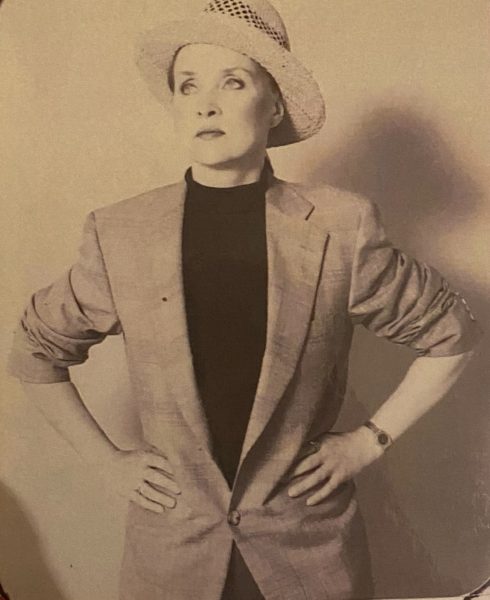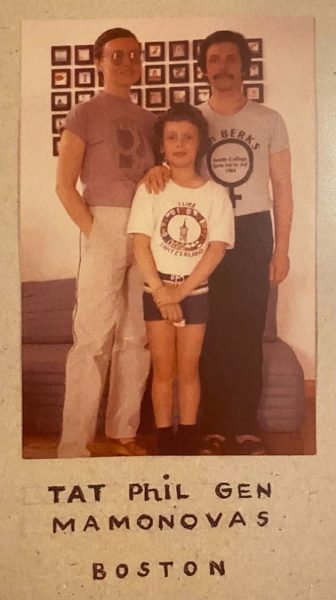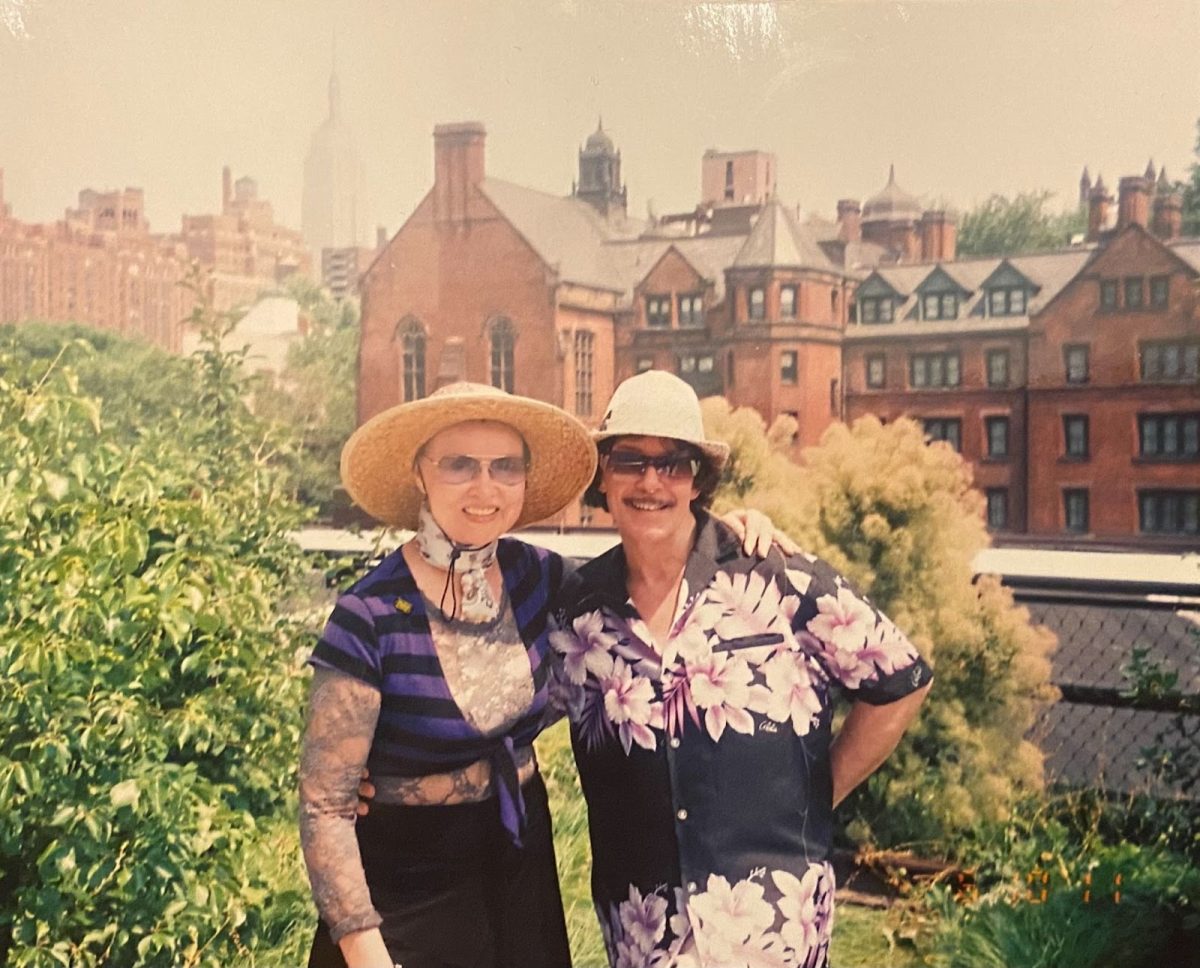In the 81st Street Museum of Natural History train station, a beautiful tune echoes through the long tunnel that leads from the entrance to the platform. Situated in the middle of the nearly deserted underground passage is an extravagant man, dressed entirely in 1970s Russian fashion, with the exception of a classic Parisian beret. He is playing the accordion. As the sound waves bounce on and off the walls of the tunnel, the man sways and rocks to his improvised music; he moves in unison with the crescendos and decrescendos of the ballad.
This is Gennady Shikariov.
Born in Leningrad, St. Petersburg in 1949, Shikariov lived in one of the most powerful communist nations of our time. In a totalitarian country plagued by censorship laws and restrictions on freedoms, those like Shikariov with a profound connection to and passion for the arts proved to be nothing short of a challenge for the government.
Social issues had been prevalent in Russia long before the Soviet Union — some of the most notable human rights violations in Russian history occurred during the Romanov Dynasty (1613-1917), where revolts stemmed from unsanitary living conditions and the government’s attempts to suppress ethnic diversity in Russia. These revolts later developed into the Russian Revolution, whose members passionately stood against the Romanovs.
Amidst the Revolution of 1917, a provisional government was formed by the Duma to replace the Romanov Dynasty, despite the protests from the radical Russian communist party called the Bolsheviks. After the failure of this government, Vladimir Lenin led the Bolsheviks in an extremely successful coup d’etat, securing their party’s control of the empire. After uniting the Russian and Transcaucasian Soviet Federated Socialist Republics and the Ukrainian and Belorussian Soviet Socialist Republics (collectively referred to as the Union of Soviet Socialist Republics or the USSR), embodying the one-party rule of the Communist party, the Soviet Union was officially formed.
The Soviet Union lasted from 1922 to 1991 and is recognized as the first country to form a government based on communist principles. Although its life was cut short due to democratization, the country was still one of the most powerful and populated of its time due to its rapid industrialization and strong centralized government. However, the Soviet Union brought strength and glory to Russia under horrible conditions.
Especially from 1924 to 1953, Russian citizens faced numerous human rights violations under the communist ruler Joseph Stalin. Stalin’s government ideals, which developed into Stalinism, embodied the totalitarianism that took over numerous nations during the 20th century.
Within the near three decades of Stalin’s reign, Russians were subjected to the Great Purge, a system by which Russian society was ‘cleansed of enemies.’ During this time, millions of people were imprisoned in the Gulag system of labor camps in Siberia. and many others were executed. Another of Stalin’s totalitarian efforts were his additions to Soviet Law. Originally formed during the Russian Revolution, Soviet Law facilitated some of the fundamental aspects of socialist society. This infamously included restricted freedom of religion (enforced atheism) as well as consistent censorship of the media. Under Stalin, Soviet Law expanded to restrict freedom of speech.
Unfortunately for artists, these various restrictions had significant effects on what kind of artistic work was legal to put on display; the combined constraint of speech and major censorship laws prevented all types of artists from expressing themselves freely.
Gennady Shikariov was one of many Russian citizens to fall victim to this unfortunate reality.
Shikariov discovered his affinity for multiple forms of art at a young age. As a child, he was a frequent visitor of the Hermitage Museum of St. Petersburg , which he now remembers as his first and most significant education in visual art. The phenomenal works of the museum greatly influenced Shikariov to create art of his own, particularly in the form of portraits. By the age of 12, he had created a number of pieces portraying Great Russian historical figures such as Chekhov, Tolstoy, and Gorky, all of whom frequently appeared in his school textbooks. Around this time, he started to seriously devote himself to visual art studies by enrolling in various art classes at his regular school, the Palace of Pioneers.
Visual art was not Shikariov ’s only talent. Besides his skillful use of watercolor, pencils, and ink, Shikariov also had a knack for music. Supported by his parents, he studied music at the Tchaikovsky School, where he played the accordion. Though he went through prolonged phases of not playing music in his late teens and early twenties, his love for improvising on the instrument always drew him back.
As he grew up and eventually graduated from school, Shikariov developed an intense interest in visual art over the accordion. Despite his parents’ wish that he pursue a career in music, he was determined to express himself on a piece of paper instead.
So, he embarked on a journey to open numerous exhibits in Leningrad in order to showcase his talent. However, due to the harsh Soviet laws of this period, facilitated by the rule of Leonid Ilyich Brezhnev, this dream journey was heavily challenged by the government.
“Our culture is stuck, it’s frozen. They only want you to paint social realism, which for me was not so interesting,” Gennady explained. “Russia wasn’t very supportive of independent artists, so I joined the dissident non-conformist movement where I met my wife, Tatyana Mamonova, an independent poet and feminist.”
Tatyana Mamonova may be one of the most influential Russian women of the Soviet Union. Also born and raised in Leningrad, she faced challenges akin to those of Gennady as she grew up. Similarly infatuated with art from a young age (only more focused on poetry and writing), Tatyana also had motives to share her work with the world, but was unfortunately stunted by the harsh laws of the USSR and discriminatory views toward women at the time. However, she refused to live by her oppressive government’s rules.

Tatyana was, and still is, a fearless and extremely driven woman. When she was confronted with the numerous obstacles that all women and artists faced in the Soviet Union, she was the first to step up. To this day she is recognized as the first feminist dissident of the USSR and founder of the first non-governmental organization (NGO), then called Women and Russia, that actively promoted women’s rights across the state.
In the 1970’s, she and Gennady met after they both joined the non-conformist movement of the Soviet Union, in which Russians devoted themselves to changing the conditions that Russian artists and women lived under throughout the communist reign. Together Gennady and Tatyana wrote for and published the samizdat Woman and Russia Almanac (now called the Woman and Earth Almanac), a journal that specialized in feminist writings and featured many works of art that did not abide by Soviet rules.
“We published an underground magazine with my illustrations and Tatyana as the chief editor,” Gennady explained. “She and some other women wrote a lot of articles. Eventually, government officials invited Tatyana to talk about this issue. They said that if we continued these activities she would be arrested and sent to Siberia.”
Despite the threat, Shikariov and Mamonova remained determined to spread awareness and share their art. Tatyana continued to write her articles and Gennady continued to open exhibitions in St. Petersburg – but this didn’t last for long.
“What we did was we changed the name of the magazine and we continued despite the demands of the government,” Gennady recalled. “We had a connection with the French Edition de Femme, which at the time was a pretty strong group, and they helped us gather 50,000 signatures in our defense.”

In 1980, Tatyana, Gennady, and their four year old son Phil were officially exiled from Russia due to Tatyana’s re-ignition of the Russian women’s movement. Now unable to stay in their apartment in Leningrad with their other conformist friends, the family had to find a new home. Luckily, Gennady and Tatyana’s efforts did not go unnoticed throughout Europe.
It turns out that Tatyana had gained significant international recognition through her magazine and her involvement with her revolutionary feminist movement. Upon their exile, she and Gennady received the legal aid from Delphine Seyrig (a well known actress in Paris) and Gloria Steinem (the editor of Ms Magazine at the time) to give speeches around the world advocating for women’s and artists’ rights.
The family spent multiple years traveling around Europe and parts of Asia. Tatyana went to Switzerland, Italy, Turkey, and various other countries, spreading her message about women’s and artists’ rights in Russia, and also wrote poetry, books, and diaries along the way. Meanwhile, Gennady continued on his journey of sharing his art. In almost every one of their destinations, he opened exhibitions to display his and Tatyana’s creations over the years.
Eventually, in 1984, one of Tatyana’s books was published by the Beacon Press, an acclaimed American book publisher, and everything changed. Offers from American universities, including Harvard University, began to roll in, asking Tatyana to come to their school to teach Women’s Studies. Unable to reject the once-in-a-lifetime offer from Harvard, the family began a new chapter of their lives in the United States in Boston.
Shikariov and Mamonova have now lived in America for almost four decades. Throughout this time, they have opened well over twenty different exhibitions in numerous states with Ms. Magazine. Additionally, Tatyana became an associate of the non-profit Women’s Institute for Freedom of the Press.
By the late 1980’s, Tatyana and Gennady began to spend a lot of time in New York. In 1988, the two opened an exhibit in SoHo for $3,000. With the help of their friends, they sold almost all of the work that they put on display.
Now living comfortably in the United States, Tatyana and Gennady eventually settled in New York City. To this day, they continue to open exhibits frequently both in the United States and in Europe. They also continue to travel the world in style, experiencing the many wonders of other countries wearing head-to-toe European fashion. Despite the many struggles that they faced in the Soviet Union, Shikariov and Mamonova continue to live and breathe their Russian culture.
“My Russian heritage is important to me – we speak Russian at home in New York. Our culture is not one you can abandon,” he admitted.
However, their time in the U.S. has not been easy, especially in the recent years with the Russia-Ukraine war.
“Regarding Ukraine, we are pacifists and believe all wars should be stopped now. However, even though we are American citizens, we often feel isolated because of the constantly changing political situation,” Gennady explained. “It feels like we should be responsible for all conflicts between America and Russia.” Moreover, he admits that he is ashamed of the current government in Russia and that he no longer desires to return to what used to be his home.
Not only has the Russia-Ukraine war been difficult for Tatyana and Gennady while in the United States, but the two have also noticed the many injustices that exist in the country against all American artists. After decades of resentment towards the artistic limitations and treatment of artists in Russia, Shikariov and Mamonova are extremely frustrated by these conditions.
“Concerning the U.S., I have to say that it is disappointing how America treats artists,” Gennady said. “Actors and ballet dancers often perform in small and uncomfortable spaces, and the artists must pay a lot for their exhibitions.”
Shikariov and Mamonova also continue to have strong feminist beliefs, which they apply to the conflictual government system in Putin’s Russia. “We think it’s patriarchy that is the problem for our planet – the power of the men to create war and violence,” Gennady explained. “We really have to change this, and I think we have to give more opportunities to women.”
Forty years after their departure from the Soviet Union, Shikariov and Mamonova still hold the same beliefs – they are forever devoted to feminism, pacifism, and respect for all artists. During their time in Russia, they actively supported artistic expression despite its illegality, and now in the United States, they continue to avidly stand against the mistreatment of the artistic community.
Gennady and Tatyana have traveled the world in a way unlike any others – they experienced various countries and continents in an open-minded fashion, appreciating their respective cultures while also sharing their own culture through art. Together, they have built incredibly unique, fulfilled, and meaningful lives, ones that are filled with new beginnings and risks.
Gennady Shikariov and Tatyana Mamonova may reside in New York today, but they belong to the whole world.
“Our culture is stuck, it’s frozen,” said Gennady Shikariov.

